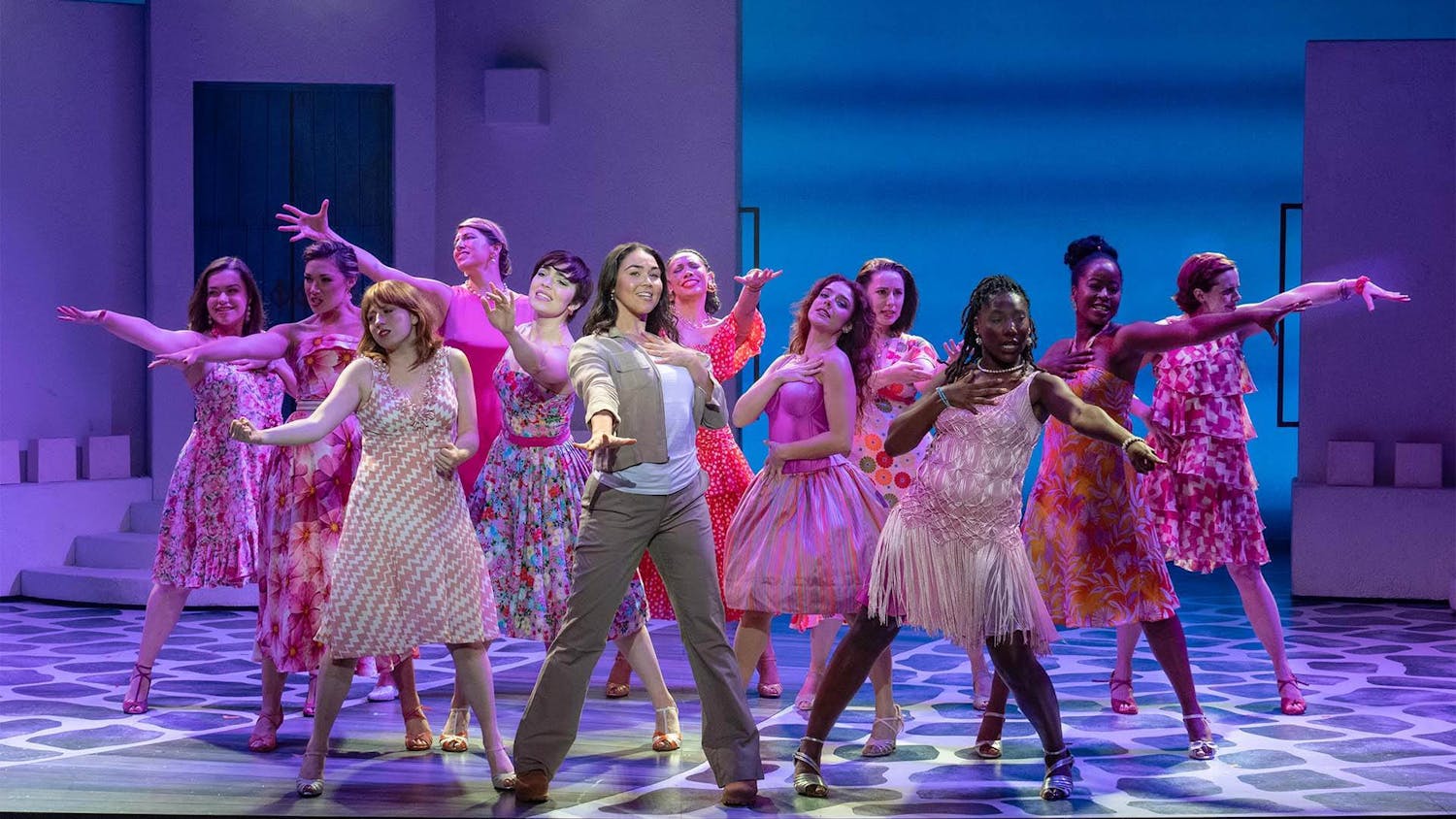Earlier this month, John Krasinski’s “A Quiet Place” was released on home media. Its basic premise — a family living in taciturn paranoia among creatures who hunt via sound — was enough to pique my interest during its initial run in theaters. The film received immense critical and commercial success, reaping its budget tenfold and numerous voices calling it one of the best horror movies in years.
Krasinski, though incredibly talented, never struck me as a director. That is, not in the composited image of the autonomous artist, obliterating any obstacles in their path to create the passion project of their career, such as Terry Gilliam’s “The Man Who Killed Don Quixote,” a production cursed for 20 years and is finally closing Cannes 2018. Like most, I’ve recognized Krasinski more so from the television medium, especially “The Office,” among smaller supporting roles in other programs and films (i.e. George Clooney’s “Leatherheads” or Bill Condon’s “Dreamgirls”).
Having said that, when I went to his debut film premiere of “The Hollars” at Sundance 2016, my expectations were conflicted: It’s not often you hear television actors transitioning to directing with substantial success. Adding insult to injury, “The Hollars” was pretty mediocre to me. The cast, while strong, carried out a story that offered nothing groundbreaking, and it became a collage of elements pulled from the familial drama in any number of ways (e.g. pregnant wife, hospitalized parent, estranged relationships, etc.). A sweet story, sure, but I left thinking I could have used that ticket for something more memorable, like “Sing Street” or “The Lobster.”
“Only time can tell if Krasinski is more fit for a silver screen or a small one.”
I digress, but the point remains that Krasinski’s sophomore film, being a horror-thriller, instilled some skepticism in myself. Knowing what I know about my first experience with his films, the positive acclaim continues to surprise me, but also imbues an excitement around the film. It’s curious, then, if his third project will meet, surpass or disappoint the expectations left in the wake of “A Quiet Place.” Paramount Studios has already confirmed a sequel to the horror hit, so only time can tell if Krasinski is more fit for a silver screen or a small one.
I find it near-impossible to avoid acknowledging the distinctions between these texts, as “The Hollars” and “A Quiet Place” are two astonishingly different films. Yet, they seem to uphold the same core ideologies of familial cohesion and supervision, a rejection of alienation as a means of intrinsic and extrinsic strength. Fair enough. I suppose the tension of protecting others is a horror scenario in and of itself. In fact, this suspenseful foundation seems to work in multiple post-apocalyptic, crime, horror and thriller films: “Children of Men,” the “Mad Max” series, “Cape Fear” and “Blue Velvet,” among others.
These are simply a few examples within particular genres, but the concept also translates to other mediums. Cormac McCarthy seemed to balance this well in his novel “The Road,” and it was effectively executed in many highly praised video games of recent memory: “The Last of Us,” “The Witcher 3: Wild Hunt” and the new “God of War” each focus on a protagonist and the lengths they will go to protect a specific character.

"The Last of Us" centers around Joel and Ellie, two characters who will do anything to protect each other. (Flickr/Courtesy)
A bit of a tangent, but the consistency is there. Are we drawn to these texts because of an innate desire to protect? Is it a response to humans as social creatures, or some psychological outlier? Could it be a variation of all these? The obvious beauty in art is its subjectivity, and I’m of the mindset that it is indeed some combination — a cultural coalescence of belonging to a group and avoiding the dissociating and exhaustive tales of “Taxi Driver” or “Eternal Sunshine of the Spotless Mind.” It’s in these moments where speaking into the abyss yields no satisfying response, and I come around to the idea of Krasinski’s works shooting for the bigger picture — no pun intended.
Through this, then, we might start to see these same tribal qualities surface in directors of the past, like Stanley Kubrick. Where “The Shining” shifts the protectiveness of Jack over to Wendy, we see camaraderie and survivability playing key roles in “2001: A Space Odyssey” and “Full Metal Jacket.” In a more traditional sense, Kubrick’s World War I drama “Paths of Glory” places a commander (Kirk Douglas) in defense of lower-ranking soldiers accused of cowardice.
In this meaty sample of Kubrick’s filmography, he slides along the generic spectrum, ranging from paranormal/psychological terror to the detached coldness of isolationist science fiction. He also showcases various comedic, hyper-realistic or mind-bendingly gritty depictions of the human psyche during wartime. In one way or another, Kubrick’s characters are designed to look out for others they rely on in hopes of a reciprocity that will ultimately achieve safety, be it from a murderous hotel caretaker, sentient computer or Viet Cong soldiers. To defy the group spells danger for the character, as “A Clockwork Orange” shows. Alex’s strife with his fellow droogs leads to an unfortunate betrayal and ultimate downfall of the protagonist’s defining characteristic: ultra-violent behavior.

Stanley Kubrick shooting "The Shining's" infamous bar scene with Joe Turkel and Jack Nicholson. (Gentleman.be/Courtesy)
If we go further back to the works of 20th century director Howard Hawks, we see he holds an accomplished variance in the classical Hollywood environment. “His Girl Friday” may be a rip-roaring comedy of romantic reclamation, but the Western characteristics of “Rio Bravo” clearly signify a difference in approach. Even if I were to ignore the costume design and diegesis, “Rio Bravo” has a cinematographic style that boasts the open, dry space of the town, a sharp contrast to “His Girl Friday’s” claustrophobic — dare I say prison-like — aesthetic. But then, we have further distancing in Hawks’ “The Big Sleep,” another film-noir adaptation of Raymond Chandler’s sardonic private-eye Philip Marlowe, whose harsh lighting and crime-fueled narrative create a wholly different tone than, say, the 1932 original of “Scarface,” a pre-Code gangster romp with unapologetically candid gunfights.
Despite this, as is the case with Kubrick, characters' protectiveness is key: Sheriff Chance and Dude help protect Rio Bravo, Walter and Hildy fall back in love and protect Earl Williams, Tony Camonte works to protect the family while Marlowe — in true wise-guy fashion — aims to protect his due pay. If not for Hawks’s established reputation, it’s almost baffling how versatile his direction can adapt to these many approaches, styles, eras and moods of these stories.
As a whole, I’m not making a case for Krasinski to be regarded in the likes of Kubrick or Hawks’s echelon, but it’s fascinating to see how time-tempered this basic, human behavior is across a multitude of periods, moralities and in particular, genres. Like every other director, Krasinski has to earn the same commendations of immortalized filmmakers through hard work and hard work alone. That’s not to say I’m unexcited for the sequel to “A Quiet Place,” but to see him extend the camera to other flavors of film proves an excellent test for directorial aptitude.
“I encourage an active seeking-out of those who effectively and proficiently explore the unknown.”
So while I agree that a director who can land in a genre they’re comfortable with — and are good at — is something they could stick to without complaint, I encourage an active seeking-out of those who effectively and proficiently explore the unknown. OK, the slightly crude family comedies of Wes Anderson are a lot of fun, and Nora Ephron’s heartwarming romances are perfectly sentimental.
However, it’s these “genre chameleons” I’m interested in. Once they change colors, a thematic bond starts to appear, and you begin to see their work in a whole new light.
Christian Memmo is a film columnist for the Daily Cardinal. To check out more of his work, click here .

![From "The Office" to "A Quiet Place," John Krasinski is a recent example of someone who has achieved success in multiple genres [and mediums].](https://snworksceo.imgix.net/car/89a01b4e-a6a4-449f-a2ba-c9daf3489815.sized-1000x1000.jpg?w=1000)




